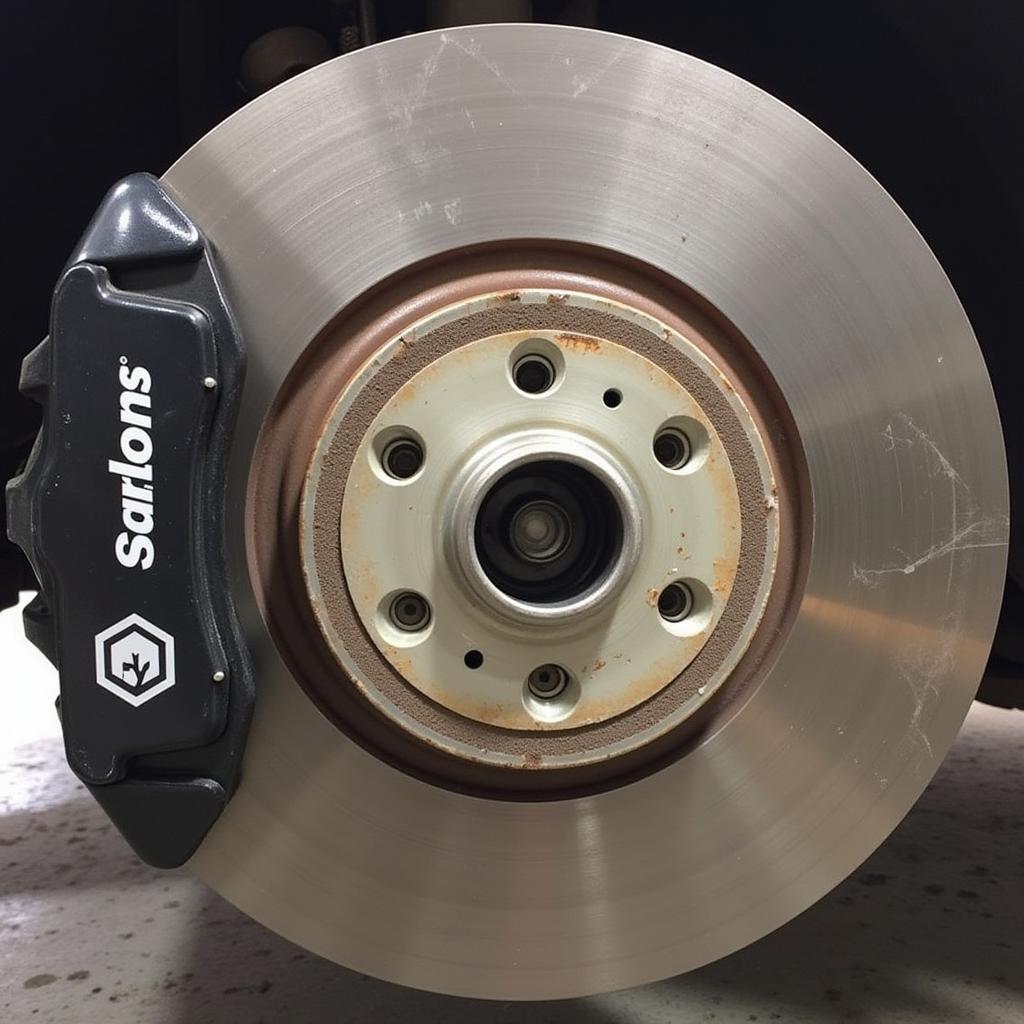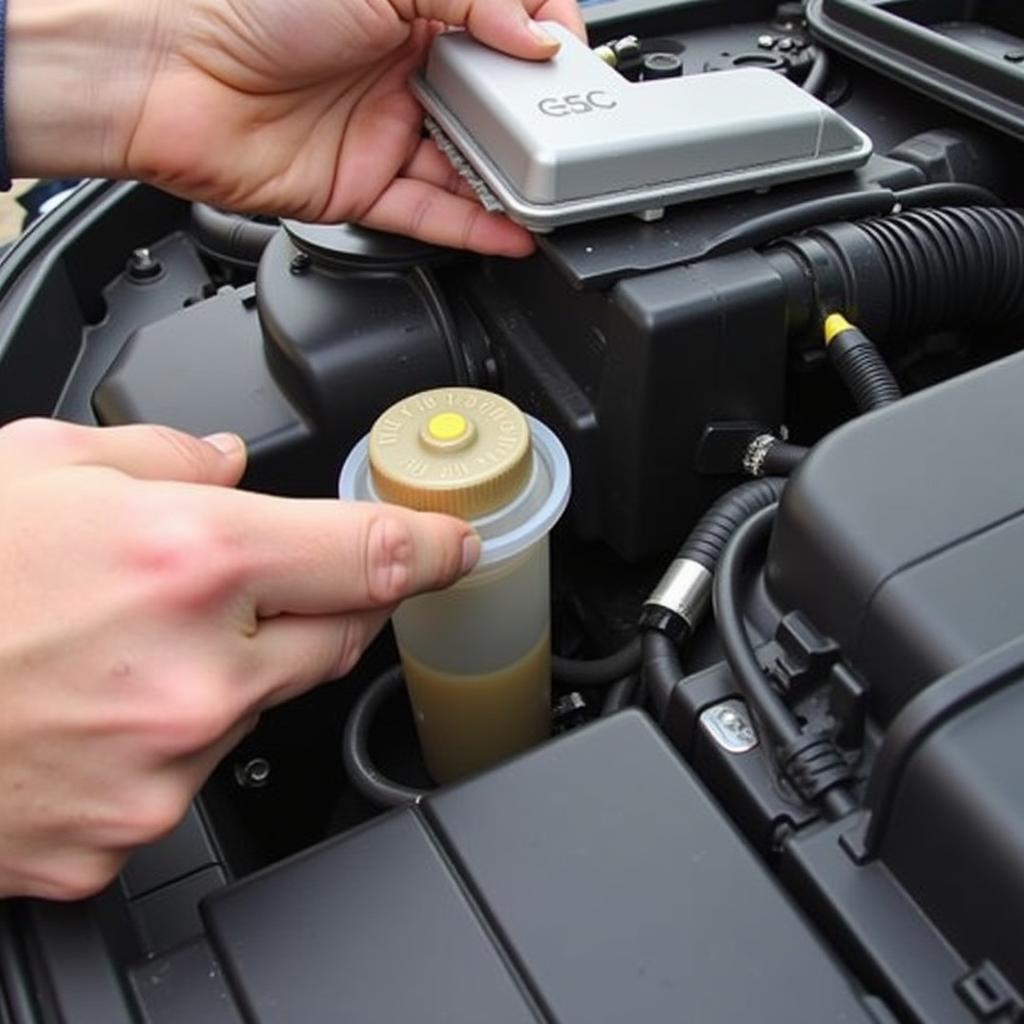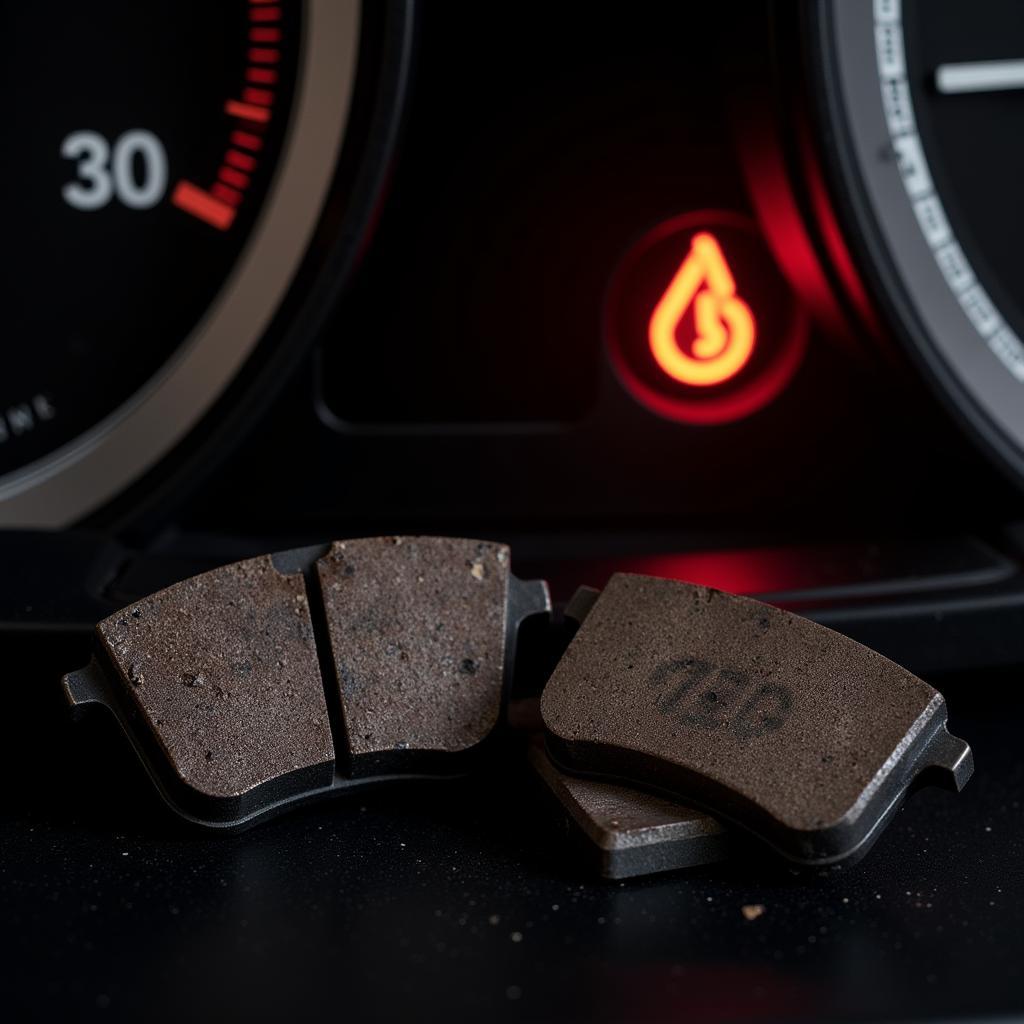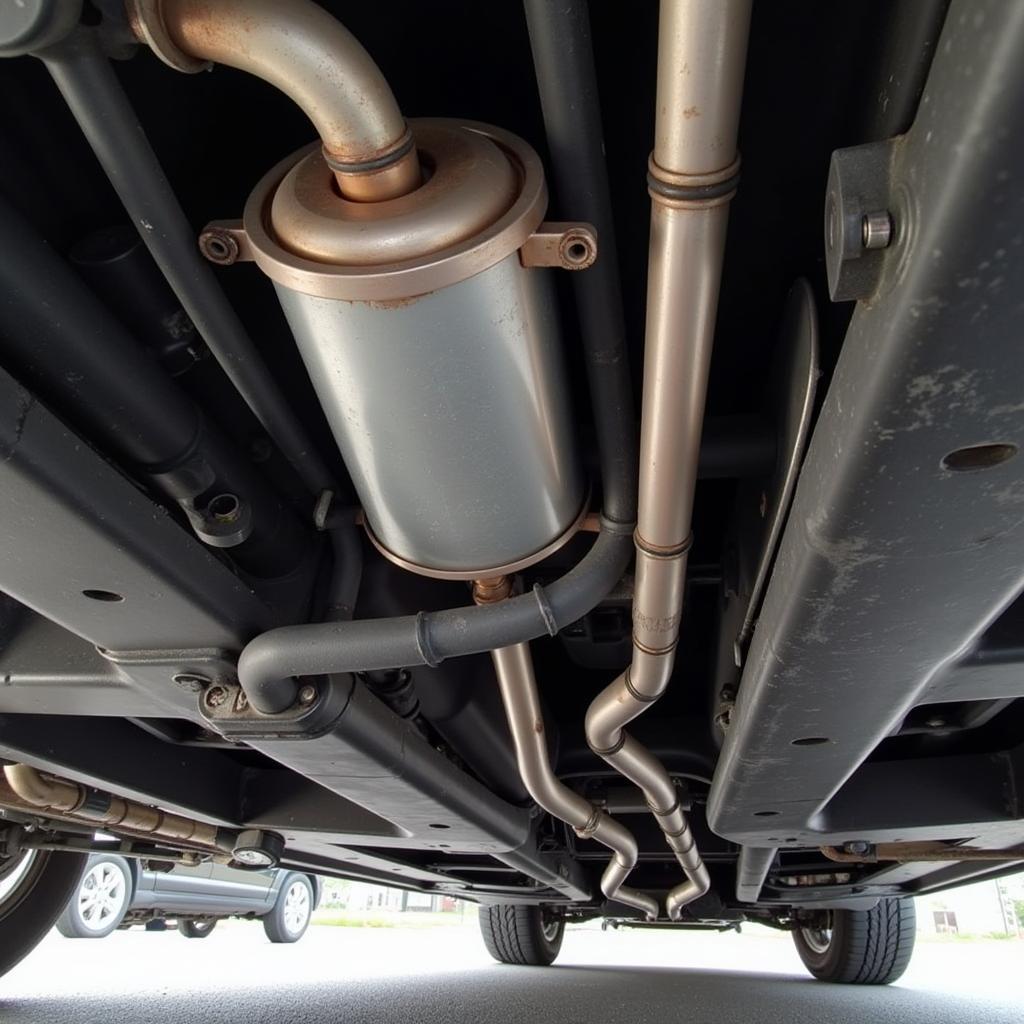The dreaded brake warning light on your 2015 Mercedes-Benz E-Class can be a cause for concern. This article aims to demystify the issue and provide valuable insights into diagnosing and potentially fixing the problem. From understanding the different warning lights to exploring common causes and solutions, we’ll equip you with the knowledge you need to address this issue effectively.
Understanding Your E-Class Brake Warning Lights
Several different warning lights related to your braking system can appear on your 2015 E-Class dashboard. It’s crucial to distinguish between them to accurately diagnose the problem. A red BRAKE light typically indicates a serious issue like low brake fluid or a malfunction in the braking system itself. A yellow ABS light signals a problem with the Anti-lock Braking System, while a parking brake light usually means the parking brake is engaged.
Common Causes of the 2015 Mercedes-Benz E-Class Brake Warning Light
Why is my 2015 Mercedes-Benz E-Class brake warning light on? Several factors can contribute to the illumination of the brake warning light. These range from simple issues like worn brake pads to more complex problems with the ABS system or brake fluid level sensor. Let’s examine some of the most common culprits:
- Worn Brake Pads: This is the most frequent cause. As brake pads wear down, a sensor triggers the warning light.
- Low Brake Fluid: Low brake fluid can indicate a leak in the braking system. This is a serious issue that requires immediate attention.
- Faulty Brake Fluid Level Sensor: Sometimes, the sensor itself can malfunction, triggering the warning light even if the brake fluid level is adequate.
- ABS Problems: Issues within the ABS system, such as a faulty wheel speed sensor, can illuminate the ABS warning light alongside the brake warning light.
- Brake Light Switch Malfunction: A faulty brake light switch can also trigger the brake warning light.
 Worn brake pads on a 2015 Mercedes-Benz E-Class
Worn brake pads on a 2015 Mercedes-Benz E-Class
Troubleshooting the Brake Warning Light on a 2015 E-Class
If you’re experiencing a 2015 Mercedes-Benz E Class brake warning light problem, these steps can help you identify the cause:
- Check the Brake Fluid Level: Open the hood and locate the brake fluid reservoir. Ensure the fluid level is within the specified range.
- Inspect the Brake Pads: Visually examine the brake pads through the wheel spokes. Look for significant wear or if the wear indicator is touching the rotor.
- Check the Parking Brake: Ensure the parking brake is fully disengaged. Sometimes, a slightly engaged parking brake can trigger the warning light.
- Scan for Diagnostic Trouble Codes (DTCs): A diagnostic scanner can pinpoint specific faults within the braking system by retrieving DTCs.
 Checking the brake fluid level on a 2015 Mercedes-Benz E-Class
Checking the brake fluid level on a 2015 Mercedes-Benz E-Class
Remote Diagnostics and Software Solutions
In some instances, remote diagnostics and software updates can address the 2015 mercedes-benz e class brake warning light problem. Specialized diagnostic tools allow technicians to access the vehicle’s systems remotely, identify software glitches, and install updates to resolve certain issues.
“Remote diagnostics are becoming increasingly valuable for addressing complex electronic issues in modern vehicles like the E-Class,” says John Miller, a certified automotive diagnostics specialist. “Software updates can often rectify underlying problems without the need for physical intervention.”
When to Seek Professional Help
While some brake warning light issues can be resolved with basic troubleshooting, others require the expertise of a qualified technician. If you’re unsure about the cause of the problem or uncomfortable performing repairs yourself, it’s always best to seek professional assistance. Don’t ignore a persistent brake warning light, as it could indicate a serious safety concern.
Conclusion
The 2015 Mercedes-Benz E-Class brake warning light problem can stem from various issues, from worn brake pads to more complex electronic malfunctions. By understanding the different warning lights, common causes, and troubleshooting steps, you can take the necessary steps to address the issue effectively. However, if you’re unsure or the problem persists, don’t hesitate to consult a qualified technician. Remember, a properly functioning braking system is critical for your safety and the safety of others on the road.
FAQ
- Can I drive my E-Class with the brake warning light on? It’s not recommended. The brake warning light indicates a potential problem with your braking system, which could compromise your safety.
- How much does it cost to fix a brake warning light issue? The cost varies depending on the underlying cause. A simple brake pad replacement is relatively inexpensive, while more complex repairs can be significantly more costly.
- How often should I check my brake fluid level? It’s a good idea to check your brake fluid level at least once a month.
- What is the difference between the ABS light and the brake warning light? The ABS light indicates a problem with the Anti-lock Braking System, while the brake warning light signifies a more general issue with the braking system, such as low brake fluid or worn brake pads.
- Can a faulty sensor cause the brake warning light to come on? Yes, a faulty brake fluid level sensor or wheel speed sensor can trigger the brake warning light.
- Is it safe to replace brake pads myself? If you have the necessary tools and experience, you can replace brake pads yourself. However, if you’re unsure, it’s best to consult a professional.
- What should I do if my brake warning light comes on and stays on? Have the vehicle inspected by a qualified technician as soon as possible. A persistent brake warning light could indicate a serious safety issue.


